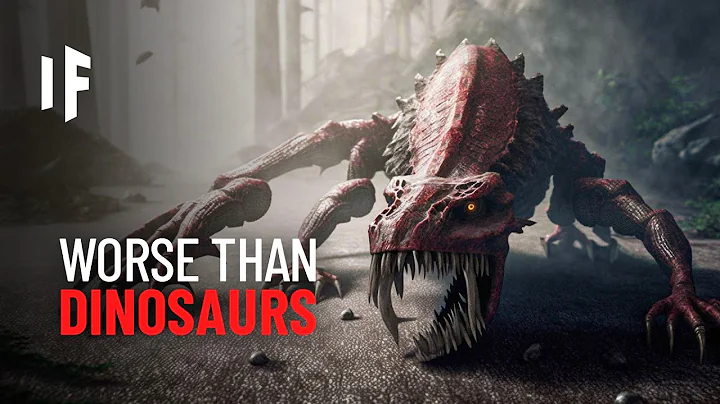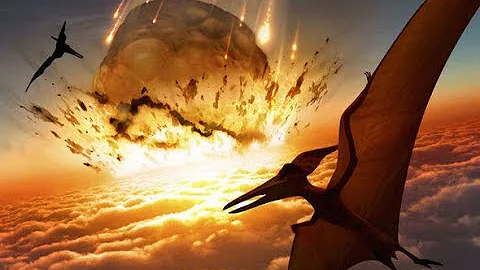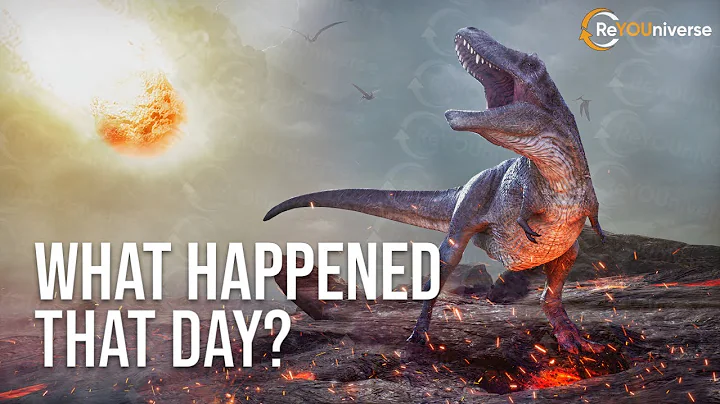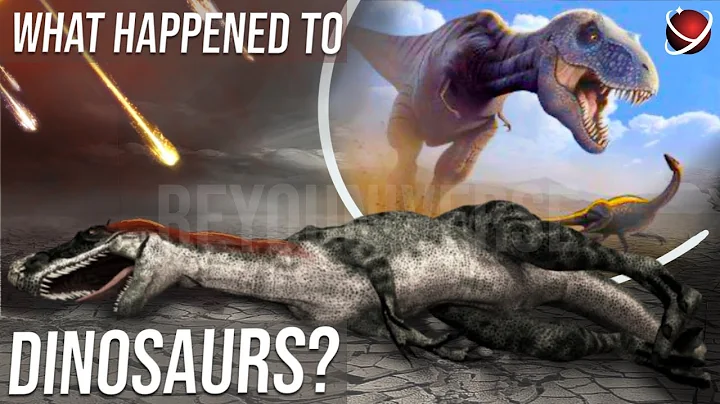Text | "China Science News" reporter Shen Chunlei
The mass extinction event at the end of the Triassic period (about 200 million years ago) is one of the five major biological cluster extinction events in geological history. But dinosaurs luckily escaped this disaster and dominated the Jurassic and Cretaceous worlds.
So, what was the cause of the mass extinction of terrestrial life at the end of the Triassic? Why could dinosaurs survive this natural disaster and develop rapidly after the disaster?
Different from the "bare" appearance of dinosaurs in our impression, the latest research has found that dinosaurs were born with feathers. These feathers had thermal insulation functions, allowing dinosaurs to adapt to the cold polar climate, escape the volcanic winter of the End Triassic, and quickly occupy the ecological niche of the Jurassic . This result was completed by Nanjing Institute of Geology and Palaeontology, Chinese Academy of Sciences (hereinafter referred to as Nanjing Institute of Palaeontology), in cooperation with Columbia University and other institutions in the United States, and was published in Science Advances on July 2.

Dinosaur footprint fossils were discovered in the "Arctic"
Everything originated from a batch of "out of time" dinosaur footprint fossils.
The Late Triassic (230 million to 200 million years ago) to the early Early Jurassic was a typical greenhouse period in the history of the earth. There were no glaciers at the poles of the earth, and the forest coverage reached the north and south poles of the Pangea continent at that time.
In this study, the scientific research team not only recalibrated the paleolatitude of the Junggar Basin during this period from about 40 degrees north latitude, which was previously generally believed to be about 71 degrees north latitude, but also discovered ice in deep lacustrine mudstone for the first time. Raft sedimentation.

Laustrine strata in the Junggar Basin that preserve ice-cutting deposits and dinosaur footprints (Photo courtesy of Nanjing Paleontology)
Fang Yanan, one of the authors of the paper and an assistant researcher at the Nanjing Institute of Paleontology, told " China Science Journal " that the discovery of ice raft deposits indicates, Even during the Greenhouse Earth period when there were no glaciers at the poles, there were seasonal ices at the poles with temperatures below freezing.
"What is particularly coincidental is that we also found beautifully preserved dinosaur footprint fossils in the lacustrine mudstone from the Late Triassic to the Early Jurassic in the Junggar Basin. This shows that dinosaurs lived in the Late Triassic to the Early Jurassic in the polar regions and adapt to the seasonal cold climate in the polar regions," Fang Yanan said.

Dinosaur footprints (photo courtesy of Nanjing Paleontology)
Dinosaurs are born with feathers and are not afraid of cold
Why can dinosaurs survive the cold?
Corresponding author of the paper and researcher of the Nanjing Institute of Paleontology Sha Jingeng said: "We infer based on the phylogenetic scaffolding method that dinosaurs were born with feathers, but these feathers were obviously not used for flying. In addition, the feather structure of dinosaurs and their ability to fly The feather structures of pterosaurs and are similar, and we can infer that all ornithora are born with feathers.” The
research team believes that the most likely purpose of these primitive feathers was for dinosaur insulation. This may explain the differences in the distribution of different types of dinosaurs at different latitudes.
Sha Jingeng said: "At the end of the Triassic, we found that low latitudes were dominated by herbivorous and carnivorous suborders (large archosaurs), and there was a lack of herbivorous dinosaurs."
In contrast, , in the middle and high latitudes, there are significantly fewer herbivorous crocodiles than herbivorous dinosaurs.
In this regard, Sha Jingeng explained that the primitive feathers with thermal insulation function ensured that herbivorous dinosaurs could withstand the cold winter in mid- and high latitudes, and then exclusively enjoyed the rich and stable plant resources in mid- and high latitudes. The suborder Pseudosuchus, which does not have feathers for insulation, cannot survive the cold winters of mid- and high-latitudes.

Paleogeographic location and dinosaur distribution map of the Junggar Basin in the Late Triassic (Photo provided by Nanjing Institute of Paleontology)
Mass extinction of terrestrial life, dinosaurs dominate
The main cause of the mass extinction event at the end of the Triassic was the eruption of the Central Atlantic Super Igneous Province.
The large amount of carbon dioxide released by the super volcano eruption has led to global warming, ocean acidification and hypoxia, etc., which have been considered to be the causes of the extinction of marine life . And why did "insulation" become the secret to dinosaur survival? The
research team believes that the volcanic winter first caused by the super volcanic eruption is the primary factor in the extinction of terrestrial life.
What is volcanic winter?
Sha Jingeng explained that volcanic winter refers to the sudden drop in the earth's surface temperature due to the large amounts of volcanic ash and aerosols released by volcanic eruptions blocking sunlight radiation. Volcanic winters last for a short period of time, generally lasting from a few years to decades, and are difficult to record directly in sediments.
"Numerical simulations can prove that the eruption of the Central Atlantic Super Igneous Province at the end of the Triassic caused a severe volcanic winter." Sha Jingeng told China Science News.
"If the temperature rises, terrestrial organisms will migrate from low latitudes to high latitudes. However, after the mass extinction event at the end of the Triassic, terrestrial tetrapods, including dinosaurs, migrated from high latitudes to low latitudes. The pseudosuchians originally living in low latitudes The dinosaurs became extinct. "Sha Jingeng said, "On this basis, we infer that the 'cold' of the volcanic winter caused the mass extinction of terrestrial life, rather than the 'heat' as believed by the traditional view. "
At this time, it has the function of keeping warm. Dinosaurs with feathers and already adapted to the severe cold in the polar regions were lucky enough to survive.

The dinosaur is holding a basal mammal in its mouth. The background is the story after heavy snowfall in the equatorial region due to volcanoes in winter
. Scientists already know this story.
After the mass extinction event at the end of the Triassic, the size of dinosaurs increased rapidly and their geographical distribution range expanded rapidly. For example, sauropod dinosaurs expanded from mid- and high-latitudes to low latitudes in the Late Triassic, ornithischian dinosaurs appeared for the first time, theropod dinosaurs increased in size by nearly 20%, and the total number of dinosaurs The number has nearly doubled.
Since then, dinosaurs have begun a 130 million-year era of dominance over the earth's land.
Related paper information:
https://doi.org/10.1126/sciadv.abo6342





















